Plastic Material Selection
Introduction
It is said that there are some 30,000 to 35,000 plastic compounds on the market as this is being written, with more being added all the time. That number is enough to stagger the mind of the designer trying to make a material selection.
Fortunately, only a small percentage of them are actually serious contenders for any given application. Some of them were developed specifically for a single product, particularly in the packaging industry. Others became the material of choice for certain applications because of special properties they offer which are required for that product or process. For example, the vast majority of Roto-Molded parts are made of polyethylene, while glass fiber–reinforced polyester is the workhorse of the Thermoset industry. A bit of research should reveal if there is a material of choice for any given product application.
Thermosets and Thermoplastics
First, a bit of a review of the basic categories of plastics materials. In general, they fall into one of two categories: thermosets and thermoplastics. Thermosets undergo a chemical reaction when heated and cannot return to their original state. Consequently, they are chemical resistant and do not burn. Cross-linked plastics are an example of thermosets. Thermoplastics constitute the bulk of the polymers available. Although some degradation does occur, they can be remelted. Most are readily attacked by chemicals and they burn readily
Amorphous and Crystalline Thermoplastics
Thermoplastics can also be broken down into two basic categories: amorphous and semicrystalline (hereafter referred to as crystalline). The names refer to their structures; amorphous have molecular chains in random fashion and crystalline have molecular chains in a regular structure. Polymers are considered semicrystalline because they are not completely crystalline in nature. Amorphous resins soften over a range of temperatures whereas crystallines have a definite point at which they melt. Amorphous polymers can have greater transparency and lower, more uniform postmolding shrinkage. Chemical resistance is, in general, much greater for crystalline resins than for amorphous resins, which are sufficiently affected to be solvent welded. The triangle illustrated in Fig. provides an easy way to categorize the thermosplastics
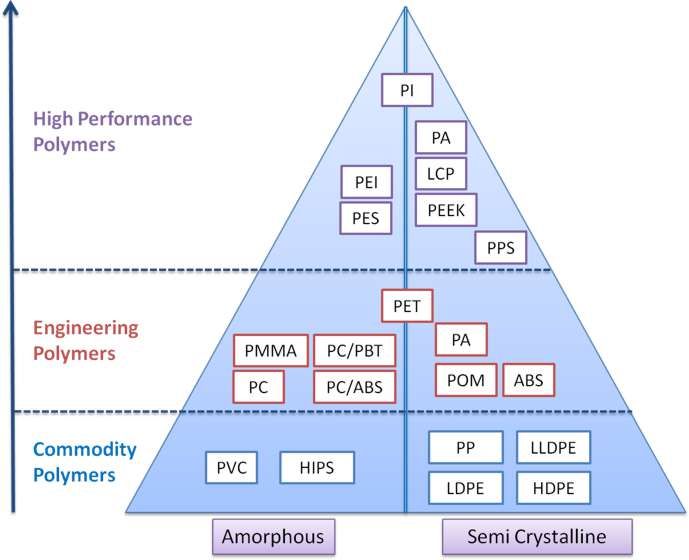
The cost of plastics
The cost of plastics, generally, increases with a corresponding improvement in thermal properties (other properties, typically, go up as well). The lowest cost plastics are the most widely used. The triangle in Fig. is organized with the least temperature-resistant plastics at the base and those with the highest temperature resistance at the top. Therefore, the plastics designated “Standard” at the base of the triangle, often referred to as commodity plastics, are the lowest in cost and most widely used. They can be used in applications with temperatures up to 150°F.
Engineering plastics
The next level are the “Engineering” plastics which can be used for applications ranging up to 250°F. ABS is often considered an engineering plastic for its other properties although it cannot withstand this temperature level. For applications requiring temperature resistance up to 450°F, the next step, “Advanced Engineering,” is appropriate. The amorphous plastics at this level are often used in steam environments and the crystalline plastics have improved chemical resistance. The top level, the “Imidized” plastics, can withstand temperatures up to 800°F and have excellent stress and wear properties as well.









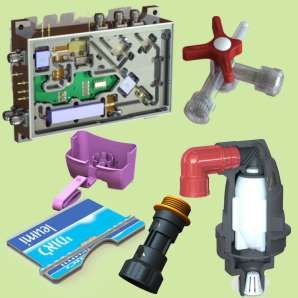
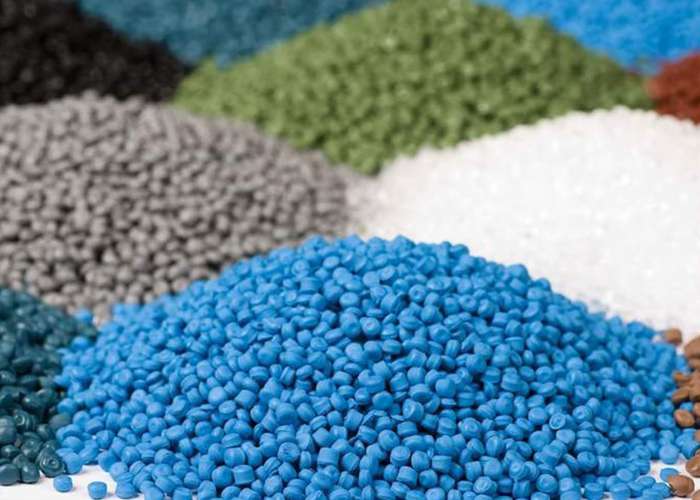
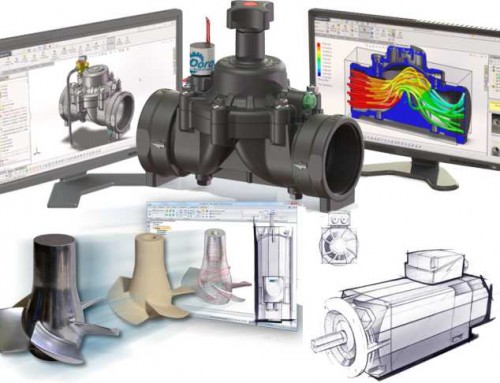

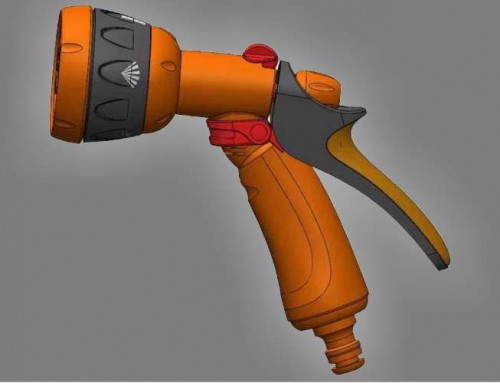






Leave A Comment